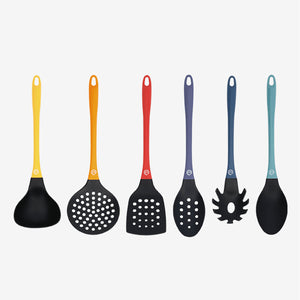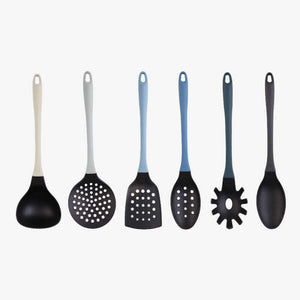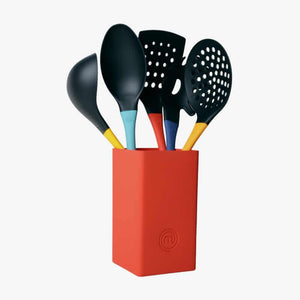The Holy Trinity of Cooking Utensils
- The Ladle
- The Spatula
- The Spoon
Covering three essential elements of cooking: frying, boiling and of course serving the food itself. With any utensil collection, these 3 items will be essential. Whether you prefer a slotted spoon for retrieving articles of food from hot water is your prerogative, but setting aside the Eurocentric pieces such as spaghetti servers or the deep-frying focused skimmers, these 3 tools will be your best friend at every stage of the culinary process.
Extras such as whisks, bowl scrapers, tongs, pastry brushes and potato mashers are great additional extras – but for day-to-day cooking jobs, the holy trinity will serve you well.
Now let’s turn to the material choices available to home cooks. Whilst most commercial and professional kitchens work exclusively with metal utensils for working with scalding oil and cast iron/stainless steel cookware, the needs and hence the utensils of a home cook are typically different.
Some of the more common utensil groups you will find in a home kitchen are wooden utensils, nylon/plastic utensils, and the baking friendly silicone utensils. Let’s break down the potential perks and drawbacks of each material in order for you to make the most informed choice, starting with Nylon.








